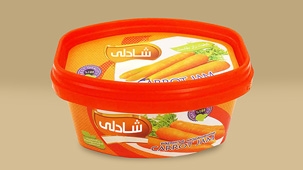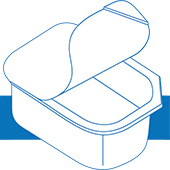As you know, jam is one of the main ingredients in breakfast and its shelf life is of great importance. Therefore, proper packaging is very important to increase its shelf life and maintain its freshness. Moreover, the intense competition in the food industry has led packaging manufacturers to attract attention by enhancing the visual appeal of this product.
West Asia Steel Company is one of the manufacturers of jam packaging machines that uses various packaging methods to enhance the beauty of jam. In this article, we will discuss various packaging methods, packaging machines, and the advantages of packaging this popular product.
Fruits are preserved in various forms, from drying to freezing. Among these methods, jam is one of the most popular ways to preserve the taste of fruits, made by crushing or cutting fruits and mixing them with gelatin and sugar.
Jam packaging provides various purposes, including extending the shelf life of the product, preserving its taste, color, and aroma, and most importantly, helping producers to be recognized in the market. Therefore, jam packaging is becoming an important topic in related industries.
The Importance and Benefits of Jam Packaging
The role of jam packaging in preserving its quality and freshness for a long time is inevitable. Apart from this, jam packaging has many advantages, which are explained below:
Shelf Life
Jam packaging in bottles, jars, and various containers ensures its durability and enables it to withstand the difficulties of transportation easily. Therefore, packaging helps producers deliver their high-quality jams to consumers without any damage.
Jam packaging using seal vacuum machines and modified atmosphere packaging significantly extends the shelf life of jam and preserves its color. Removing oxygen from the packaging prevents jam from darkening and molding.
Attractive Visual Appearance
Jam packaging can be designed in various innovative forms and containers with beautiful colors. This ultimately enhances the beauty and visually appealing appearance of jam packages, which can be attractive for customers.
Using plastic containers with unique shapes and colors, as well as plastic films with unique materials and designs, can persuade customers to make a purchase.
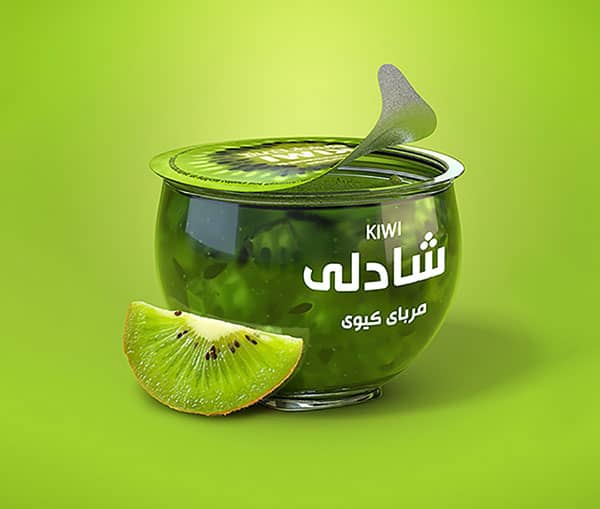
Increasing Sales
Delivering jam in practical packaging can help you increase your sales. One reason for increased sales is that your jam is packaged safely, indicating the hygiene of your product. Another reason is the information you provide about the jam, which confirms the quality of your production. These factors are sufficient to increase demand for jam packages.
Presenting Information
Jam packaging is the best source that gives you the opportunity to transfer all necessary information about the ingredients, production date expiration date, and nutritional value of the product to consumers.

Packaging Criteria for Jam
Primary packaging for jam should have the following characteristics:
- They should allow for rapid heat transfer during heating and cooling.
- They should be heat resistant, meaning they should withstand high temperatures during jam filling into containers.
- They should be capable of vacuuming, preventing contamination by moisture, air, and microorganisms after vacuuming.
- They should be firm to prevent risks during transportation and storage.
- They should maintain the product quality, meaning the packaging should not react with the product over a certain period of time and alter its properties.
- They should be resistant to sunlight, storage temperature, and atmospheric moisture.
- The containers used should be hygienic and free from contamination.
Important Points in Jam Packaging
Packaging plays a crucial role in preserving, transporting, and branding your delicious jams. Therefore, several aspects related to jam packaging should be considered, including:
Preservation and Storage
When it comes to preserving the quality, taste, and texture of jam, the answer always lies in effective packaging. This means that jam packaging is the only preserver of various types of jam. Furthermore, the use of durable packaging materials resistant to corrosion and bacteria such as glass and plastic creates a significant barrier against moisture, air, and damage throughout the jam's shelf life.
Convenience
Another aspect of jam packaging is the ease of storage and transportation, which includes the type of sealing used in jam packaging. For example, the use of waterproof lids and screw-top openings demonstrates convenient functionality to consumers and encourages them to purchase the product.
Brand Name
Packaging for your jam is also crucial for the success of your business, as it enables you to be officially recognized in the market by displaying your logo, company information, certifications, and etc. Additionally, innovative label design, providing accurate information, and enhancing the visibility of your jam packaging by warm colors can add even more value to your product.
Sustainable Packaging
Increasing environmental awareness has placed significant importance on sustainable packaging (environmentally friendly and renewable packaging) in the first instance. Therefore, using reusable, recyclable, and environmentally compatible packaging options can not only reduce the negative impact of jam packaging but also encourage users to prioritize environmental sustainability.
Types of Jam Packaging
There are various types of packaging used for jam. Among them, the common packaging types are as follows:
Plastic Buckets
Plastic buckets are large trays with a lid on top and a handle on the opposite side. These trays are used extensively for packaging jam in large quantities and have the capacity to hold up to one kilogram of jam.
Plastic trays are currently entering the market due to their lightweight and resistance to breakage. For this purpose, high-density polyethylene, polyvinyl chloride, and some newer acrylics are being used. High-density polyethylene has a linear structure. The promising properties of this material suitable for jam packaging include moisture resistance, a wide range of chemical compositions, high temperature resistance, and good tensile properties. Single-serve jam packages are made from trays made of polystyrene, polyethylene, polypropylene, or polyvinyl chloride. These packages have foil layers, transparent plastic films, or metallized plastic films. The type of plastic used should be capable of heat sealing. Plastic packaging is notable for its high durability, protection against moisture, light, and other contaminants, beauty, lightweight, and cost-effectiveness. Another advantage of plastic jam trays is their adaptability. In fact, they can be used for a wide range of products, from concentrated jams to diluted and watery ones. The airtightness of these trays helps preserve the freshness and taste of the product. Furthermore, plastic trays are an excellent option for branding and marketing, as they can be designed with various labels, logos, and designs. These trays can be sealed using seal vacuum machines and modified atmosphere packaging methods.
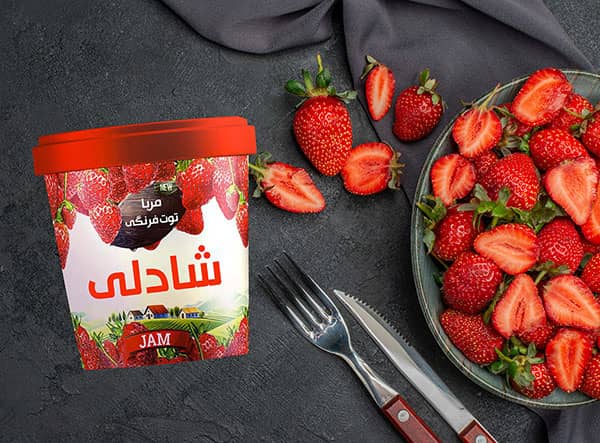
Plastic Containers and Jars
Packaging in plastic trays and various types of jars by tray sealers is much more cost-effective than glass packaging for several reasons:
- Waste inside glass increases several times because it may break during transportation or even at the company, leading to a significant increase in waste. This is not the case with PP containers.
- Glass containers are much more difficult to transport compared to plastic trays.
- Customers can significantly increase the shelf life of such products using the MAP method. They can also focus more on the beauty of their products and not limit their target market to domestic markets only.
- Various types of jars are very similar to glass containers but can be sealed and in addition to screw caps, these trays can first be packaged and sealed using seal vacuum machines by the West Asia Steel Company using the MAP packaging method, and then the screw caps can be placed on the jar.
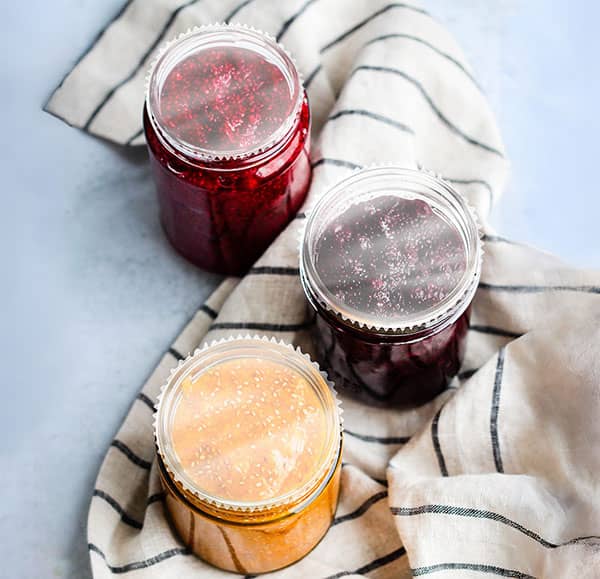
Blister Packs
Blister packs refer to flexible and transparent plastic packages with a thin layer of aluminum on them. These packages are used for various products, including jams. Blister packs are mostly used for single-serving jams in restaurants, hotels, and etc.
Glass Jam Jars
Glass jars are the most common type of packaging used for jam. These jars have a narrow neck and an aluminum lid, creating a firm barrier against moisture, air, temperature, etc., to preserve the quality of the jam.
Generally, glass is preferred for packaging jams for several reasons. Glass is chemically inert, visually appealing. Glasses comes in various sizes, shapes, and colors and their transparency allows consumers to see the color and texture of the product, making it an attractive option on store shelves. Additionally, glass jam jars are easily cleaned and reusable, making them environmentally friendly and sustainable.
The downside of glass jam jars is that they are breakable, and improper use may pose safety risks and increase returns. Additionally, glass may be heavier and more expensive than other packaging options, such as plastic. However, with increasing awareness of environmental concerns, many consumers prefer glass containers for their recyclability and sustainability over other packaging cases.
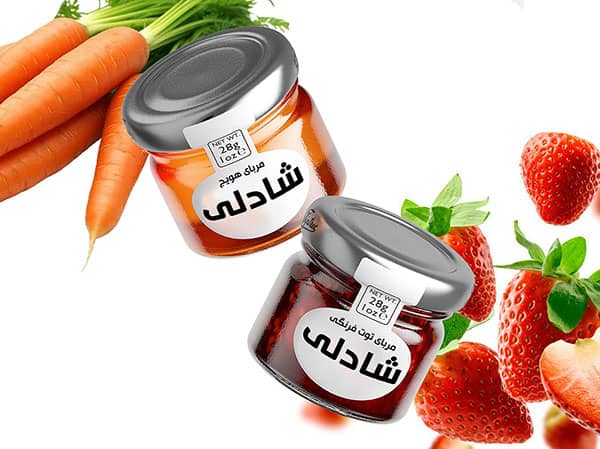
Jam Packaging Using MAP (Modified Atmosphere Packaging)
One of the concerns in the jam production line is mold growth, which is significantly influenced by not observing the relevant procedures in the jam production line, including improper execution of cooking operations.
Another concern for this product is the color change that occurs after production. When fruits are cut, their pigments are exposed, and upon exposure to light and oxygen, the color of anthocyanins and carotenoids change. To prevent this, the following measures can be taken:
- Use of antioxidants, which is only feasible in industrial jam production.
- Use of seal vacuum and gas injection packaging machines to remove oxygen from the product and prevent color change. Injection of carbon dioxide and nitrogen gases can also prevent spoilage and mold growth in the product.
Additionally, using packaging with printed coatings can protect the product from light exposure. Packaging in IML (In-mold labeling) trays, along with vacuum and injection of gas, can be a good suggestion for this type of product.
Jam Packaging Procedure
The jam packaging process involves several stages, which are described below:
Setting up the Filling Machine
The jam packaging process begins with setting up the filler to a specific volume of jam and the primary operational parameters of the machine are adjusted and fixed. Then, the machine is turned on.
Weighing and Filling the Jam
From this point, the actual jam packaging process using the automatic or volumetric filler begins. The pre-weighed jam is poured into glass bottles or plastic trays using the filling nozzles.
Completion of Packaging
After labeling and printing the necessary information, the filled and packaged jam containers are guided towards packaging in cartons using a conveyor.
Different Types of Jam Packaging Machines
Jam packaging machines come in various designs and sizes available in the market. One of the companies which manufacture these machines is West Asia Steel, which has been engaged in manufacturing these machines for years. Below, we'll examine the procedure of different types of machines manufactured by this company:
Automatic Tray Sealer Machine
One of the machines commonly used for packaging jam is the automatic tray sealer machine. This machine operates with high speed and precision to handle large volumes of products efficiently. The procedure of this machine is as follows:
- Trays are placed onto the machine either manually by an operator or automatically.
- The fillers then proceed to fill the trays with jam by nozzles.
- Once the trays are filled, vacuuming and gas injection operations are carried out according to the machine's settings, and a film is sealed onto the tray.
- Finally, the desired information is printed on the packages using a jet printer, and the trays are directed to the secondary packaging section for packaging inside cartons.
Semi-Automatic Tray Sealer Machine
Another machine used for packaging jam is the semi-automatic tray sealer machine. The procedure of this machine is similar to that of the automatic tray sealer, but the difference lies in performing some stages manually by an operator.
Vacuum Chamber Packaging Machine
During packaging with a vacuum chamber machine, the pouches are filled by an operator and placed on the machine after weighing. The packaging process is carried out using the vacuum method, and after vacuuming and sealing, the operator picks up the pouches from the machine.
Thermoforming Packaging Machine
The thermoforming packaging machine is another machine manufactured by West Asia Steel. In this machine, trays are produced using flexible or rigid films. Then, fillers are used to fill the trays, and after filling, vacuuming and sealing processes are performed.
Manual Sealing Machine
The manual sealing machine is used for packaging products with small volumes and for household, retail, or small workshop applications. The operation of this machine is fully performed by an operator. Initially, the operator pours the jam into the trays and then uses the machine to perform the sealing process.
Price of Jam Packaging Machine
One of the important factors when choosing a jam packaging machine is paying attention to the prices of different machines and selecting one that meet the company's requirements. The prices of machines manufactured by West Asia Steel vary and are influenced by various factors such as production volume and speed, size of the machine, packaging method, auxiliary equipment, whether the machine is automatic or manual, the material used in the construction of the machine, after-sales services, and more. Therefore, after determining and estimating the needs of your company, contact our experts for guidance. Our experts will determine the best machine for you in the shortest possible time after receiving the information and will inform you. They will also guide you about the payment and ordering process for the machine.
Buying the Best Jam Packaging Machine from West Asia Steel Company
If you intend to set up jam packaging lines, we recommend that before purchasing the machine, become familiar with different companies and refer to the most reputable one. West Asia Steel Company is one of the most reputable manufacturers of packaging machines in Iran. This company manufactures various machines with different sizes and performances and makes them available to consumers. One of the services of West Asia Steel Company is consultation and guidance for buyers to make a safe, suitable, and cost-effective purchase. Our company's experts initially receive information from you about the following factors:
- Company production capacity
- Preferred packaging method by the company
- Budget allocated for machine purchase
- Produced product
- Desired auxiliary equipment by the company
After estimating the costs and examining various machines, they suggest a machine suitable for your company's needs. Therefore, if you intend to launch a jam packaging production line, contact us and take advantage of our company's services.
Resources
Comments
Post comment
Comments sent by you will be published after the approval of the website administrator.

